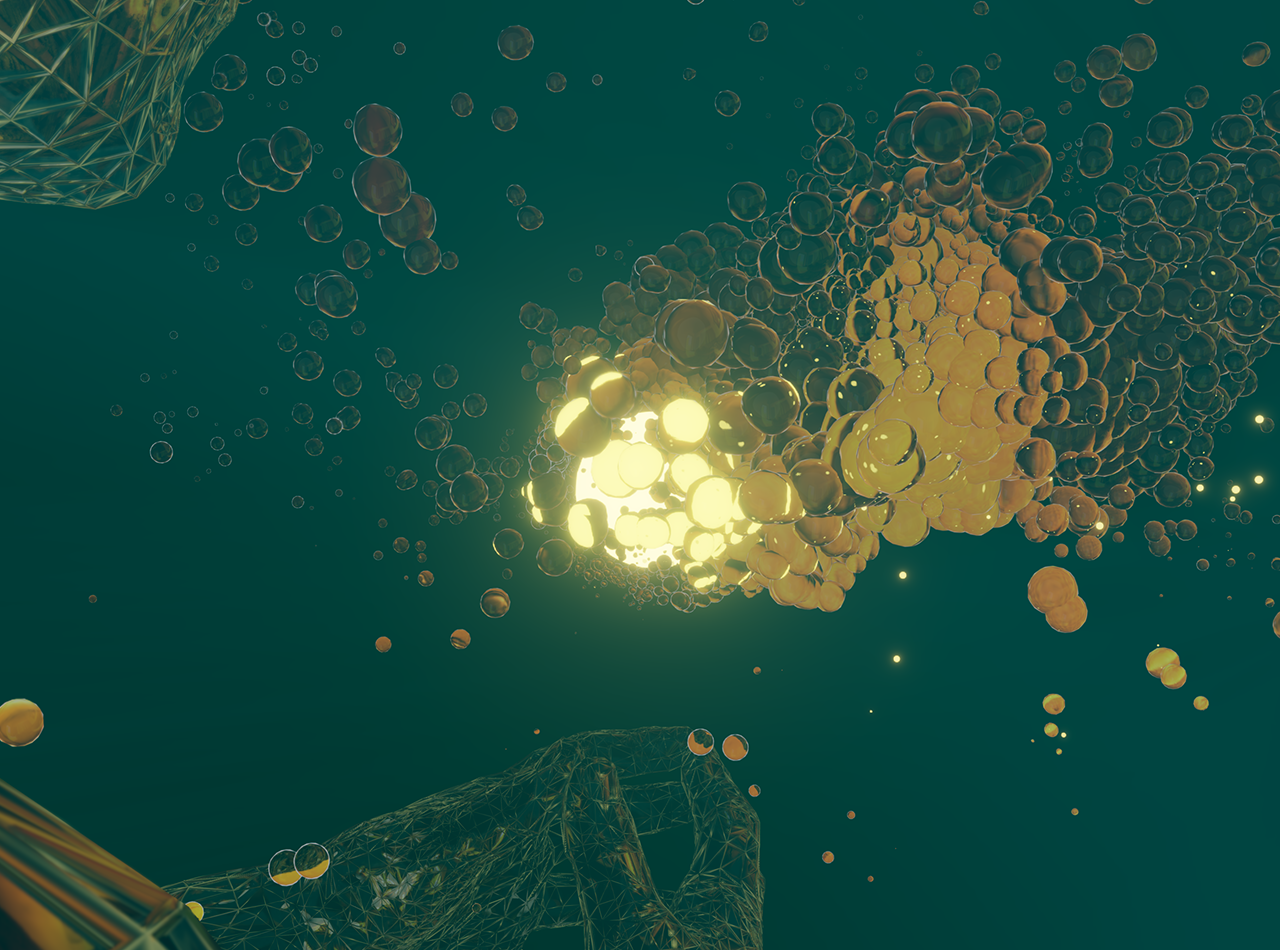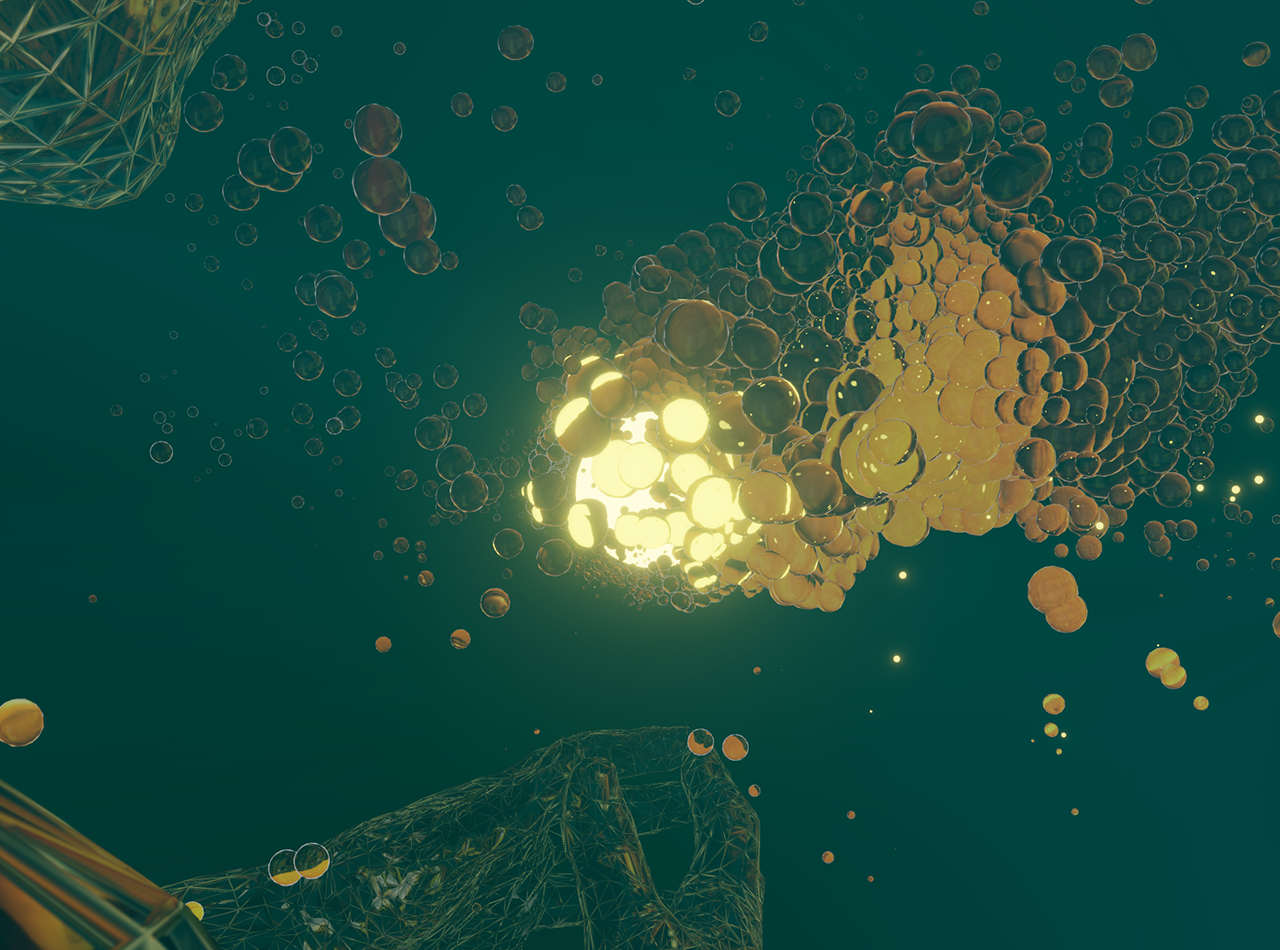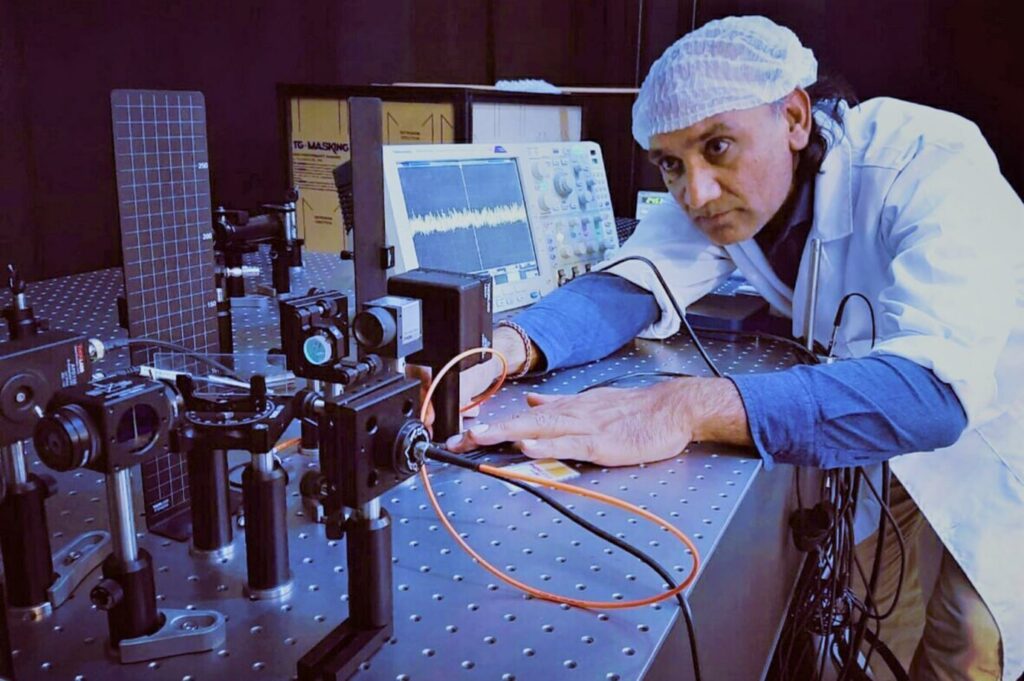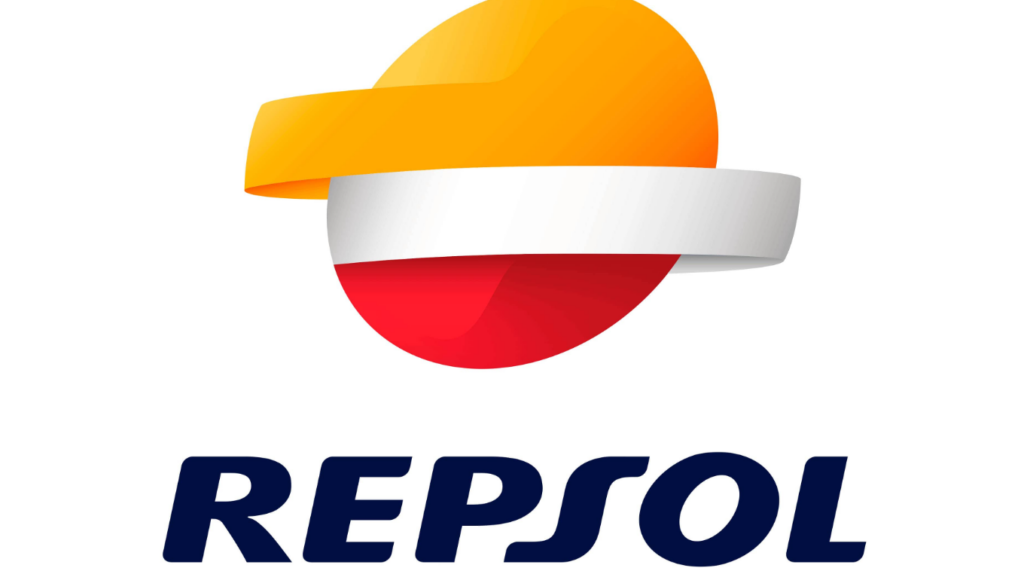
I can only describe the work behind the scenes of a team of young researchers in San Jose, Costa Rica, as a labor of love. I refer to the love for quantum physics, complex systems, the scientific method, and discovering new things, especially as they relate to the origins of the Solar System. The results were published recently in Scientific Reports at Nature. They represent more than 100 experiments over three years, including a multitude of 18-20hrs days working ad honorem.
Led by Dr. Óscar Andrey Herrera-Sancho, a physics professor at the University of Costa Rica, an interdisciplinary team of nine students in physics, chemistry, and engineering conducted the study. The University of Costa Rica is one of the largest public universities in the country. These young researchers undertook the first study on the dynamics of the Structural Phase Transition (SPT) in water ice by using a magnesium oxide (MgO) crystal lattice as a microcantilever sensor to map the water’s mechanical properties and by also using low-energy electron diffraction (LEED) in very controlled low and high-temperatures. In short, the MgO surface lattice was left exposed in an ultra-high vacuum environment with water ice molecules and other impurities. The researchers stretched the lattice crystal surface while at the same time examining the behavioral changes of the crystalline surface as solid water monolayers adhered to it. The water started decoupling from the lattice surface with temperature increments from the lower ranges up to 185 K. With the highest possible resolution, the researchers successfully observed the behavior of the two-quantum level system in the water monolayers on the MgO surface as it transitioned to another phase and structure.
The young team concludes that the water’s structural characterization technique against a surface material like MgO can also be used to understand the layers of water ice in comets and the origins of the Solar System. They also propose using their techniques to study other materials and surfaces, including silicates, metal oxides, and semiconductors, which are relevant in astrophysics, solid-state physics, and quantum computing.
A Mission to Inspire
To fully understand the inspirational story behind their work, allow me to present Dr. Herrera-Sancho. Herrera-Sancho recently made waves as co-researcher of the newly developed high-resolution ion microscope to investigate quantum gases. The journal Physical Review X published the paper he co-authored. Herrera-Sancho is originally from the small city of Palmares in the province of Alajuela. He earned his Master of Science Degree in Physics from the University of Costa Rica, where he currently teaches. He undertook his post-graduate studies at the Leibniz University Hannover in Germany. At the university, he focused on quantum optics and high-precision laser spectroscopy with Professor Ekkehard Peik. He was also a postdoctoral fellow in Austria at the Institute for Quantum Optics and Quantum Information and the University of Innsbruck, where he studied quantum computing alongside Professor Rainer Blatt.

Excited about his research and work overseas, Herrera-Sancho returned to his home country with a mission to inspire the younger generations. He has encouraged students to be bold and adventurous about the importance of quantum phenomena in biological systems, quantum metrology, quantum gases, ultracold atomic, and solid-state physics.
In the ongoing scientific conversations about interstellar ice, Herrera-Sancho and his students noticed a disparity. On the one hand, scientific literature from the 1990s connects the SPT and crystallization of amorphous solid water with the origins of life-producing compounds and ionic radicals in comets and asteroids. On the other hand, none of the studies used the MgO crystal lattice surface as a platform to detect mechanical changes with electron diffraction and the stress framework of the Williamson-Hall (W-H) model. With the support and funding from the Vice-Rector’s Office of Research at the University of Costa Rica, Herrera-Sancho proposed his students tackle this experiment as early as 2017.
Conversation with Dr. Herrera-Sancho and Andrés Chavarría-Sibaja
I had the opportunity to sync up in a 1-on-1 with Dr. Herrera-Sancho and his student Andrés Chavarría-Sibaja to learn about their work.
Chavarría-Sibaja: The interest grows because the way ice behaves in the vacuum of space with high-degrees of solar and cosmic radiation is fundamentally different from how it behaves on Earth. And yet, interstellar ice has been determined to interact with life-producing organic compounds. A better understanding of ice’s essential role in the formation of amino acids in space can also help us understand the origins of the organic compounds here on Earth.
Dr. Herrera-Sancho: It is important to note that we already had accumulated work experience and research studying solid ice monolayers’ adherence to crystalline structures. However, thanks to one of our students’ serendipitous observations, we noticed an abrupt change in diffraction signal when measuring the detachment of monolayers of ice from the lattice crystal surface. We interpreted this as a possible indication of SPT, which has already been well-studied in physics. But unlike the previous literature, we set out to systematically study the stress that we induced at a precisely-controlled temperature to observe the dynamics of SPT. This type of scientific work requires a lot of patience and the management of uncertainty. We did not know what results we could get and if the results would successfully prove our hypotheses.
Chavarría-Sibaja: In contrast to previous studies, we achieved higher degrees of resolution and temperature control as we explored the SPT. This allowed us to focus our attention on the structural dynamics of the states in SPT before and after 185 K. Our experiment can be visualized as a system with two quantum levels, just like qubits operate in the field of quantum computing. We foresee the potential application of the learnings and insights of this study in the field of quantum computing. We hope to improve our experiment in the two-level quantum system to develop qubit research with different materials. In the long term, we would like to apply the techniques used in this research to study the structures generated by ultracold atoms. Ultracold atoms allow us to manipulate and extract data more efficiently about the behavioral patterns of quantum phenomena.
Dr. Herrera-Sancho: We hope to be able to improve the time scale for future experiments. There is a team of researchers in Germany, for example, currently working with a modified diffractometer that resolves the detection time scale to microseconds. We visualize that it is plausible to observe coherence phenomena between the qubits of the SPT.
Chavarría-Sibaja: Despite the steep cost of lab equipment and experimentation, which might keep certain people in Costa Rica away from pursuing a career in experimental physics, students are willing and well-prepared to participate in advanced experiments. Many students want to participate in research because they love science. They understand that through experimentation, they will learn more about the physics that goes beyond the classroom. There is also an interdisciplinary mindset. Cross-pollination with different STEM fields is crucial for such a small country.
Dr. Herrera-Sancho: As a scientist and professor, I can say that it is uncommon to see students, for example, arrive at 5 am and leave until 10 pm to work on the study day after day and sometimes without remuneration. I was unsure about the final results. The feeling is similar to when you travel in a very long tunnel looking for the light in the dark. You do not know when it will end because everything looks dark. We did not foresee getting published either in the journal Nature. But all of the students showed courage and a sense of adventure, knowing that it is OK to be wrong, which is very important to learn early on as a scientist. We experienced a lot of failed iterations. The students always shared a genuine desire for growth and learning in the field of study. It is very fulfilling for me to see this drive and motivation to learn among the younger generations.
Looking Ahead
Technologies and scientific research converge at an exponential rate to study the behavior of quantum phenomena. We are also rapidly approaching exciting developments in our modern spacefaring future. The team of young interdisciplinary researchers in Costa Rica reminds us that science at the smallest of scales and our understanding of our cosmos still depend on a monumental amount of hard work and effort. There is no substitute for drive and commitment. As they look ahead to the adjustments and improvements to continue their work, I hope that the desire to learn and discover continues to reverberate and inspire many young generations.
//
The artist featured at the top is the Costa Rican-born Francisco Rodríguez. The artwork is part of an animation series titled Light in the Dark (2020). In many ways, Francisco visually represents the management of the uncertainty and unknowns when pursuing quantum science and research. An illustrator, 3D graphic, and motion designer since 2014, Francisco is very interested in exploring topics of science and technology through his art.
Francisco shared recently with me the following observations:
Maintaining an attitude of curiosity when learning about futuristic topics or space exploration can stimulate the imagination and the relationship between science, technology, and art… Art contributes enormously to technological and scientific developments. I would like to see the development of more advanced science and space research technologies. I believe that Costa Rica has an abundance of skilled talent.
For more market insights, check out our latest quantum computing news here.




















